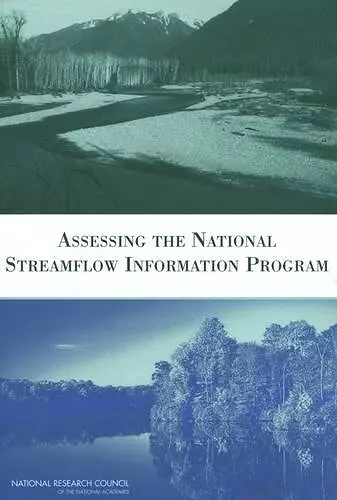Assessing the National Streamflow Information Program
National Research Council author Division on Earth and Life Studies author Water Science and Technology Board author Committee on Review of the USGS National Streamflow Information Program author
Format:Paperback
Publisher:National Academies Press
Published:19th Sep '04
Currently unavailable, our supplier has not provided us a restock date

From warning the public of impending floods to settling legal arguments over water rights, the measurement of streamflow ("streamgaging") plays a vital role in our society. Having good information about how much water is moving through our streams helps provide citizens with drinking water during droughts, control water pollution, and protect wildlife along our stream corridors. The U.S. Geological Survey's (USGS) streamgaging program provides such information to a wide variety of users interested in human safety, recreation, water quality, habitat, industry, agriculture, and other topics. For regional and national scale streamflow information needs, the USGS has created a National Streamflow Information Program (NSIP).
In addition to streamgaging, the USGS envisions intensive data collection during floods and droughts, national assessments of streamflow characteristics, enhanced information delivery, and methods development and research. The overall goals of the program are to: meet legal and treaty obligations on interstate and international waters, support flow forecasting; measure river basin outflows, monitor sentinel watersheds for long-term trends in natural flows, and measure flows for water quality needs. But are these the right topics to collect data on? Or is the USGS on the wrong track?
In general, the book is supportive of the design and content of NSIP, including its goals and methodology for choosing stream gages for inclusion in the program. It sees the ultimate goal of NSIP as developing the ability to use existing data-gathering sites to generate streamflow information with quantitative confidence limits at any location in the nation. It is just as important to have good measurements during droughts as during floods, and it therefore recommends supporting Natural Resource Conservation Service forecast sites in addition to those of the National Weather Service.
Table of Contents- Front Matter
- Executive Summary
- 1 Introduction
- 2 Gaging the Nation's Streams
- 3 Selection of NSIP Base Gage Locations
- 4 Streamflow Network Design
- 5 Streamflow Information
- 6 Contributions of NSIP to River Science
- 7 Summary and Conclusions
- References
- Appendix A: Biographical Sketches
ISBN: 9780309092104
Dimensions: unknown
Weight: unknown
176 pages